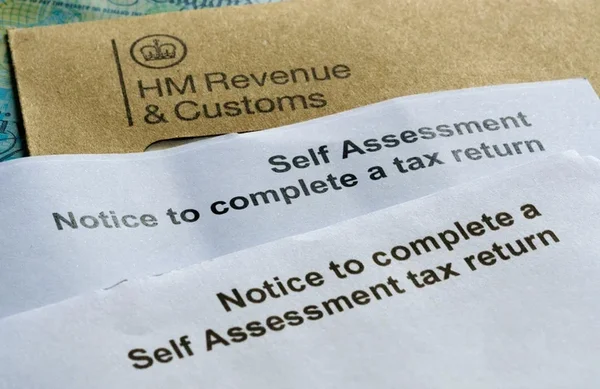Let’s Break This Down Together...
Thinking about how to grow your wealth and pay less tax?
If you're a UK taxpayer looking for smarter ways to invest, Enterprise Investment Scheme (EIS) funds might be just what you're after.
With generous tax reliefs, exemption opportunities, and even protection if things don’t go to plan, EIS funds offer more than just high-growth potential they’re one of the most tax-efficient tools out there.
But navigating the rules around EIS can feel like stepping into a maze of forms, holding periods, and acronyms.
Don’t worry, we’re going to walk through it all step by step. From how EIS funds work, to what tax breaks you can expect, and the risks you need to know, we’ve got you covered. Let’s go!
What are UK EIS Funds and Why Should You Care?
Enterprise Investment Scheme (EIS) funds are one of the most generous tax-efficient investment vehicles available to British taxpayers. They offer significant income tax relief, capital gains exemptions, and loss relief potential.
These investments support innovative UK startups while helping investors minimise their tax liability. EIS funds often provide funding to early stage technology companies, among others, supporting their initial growth and development.
Positioned within the broader venture capital landscape, EIS funds play a key role in facilitating funding for high-growth and knowledge-intensive businesses.
Molten Ventures is a notable EIS fund manager focused on investing in early stage technology companies.
The Pie tax app helps simplify EIS investment record-keeping and automatically applies all available tax reliefs to your self-assessment. Or if you’re just here to get to grips with it all, let’s break it down!

Understanding UK EIS Funds
EIS funds pool investor money to back qualifying early-stage UK companies with growth potential. EIS eligibility is determined by strict HMRC rules, and only certain companies qualify for the scheme.
These EIS qualifying companies must meet specific criteria, including engaging in a qualifying business activity that is intended to generate profits and is not excluded by the scheme. Qualifying subsidiaries may also be included if they meet the ownership and control requirements.
Think of EIS funds as professionally managed portfolios that focus on tax-efficient investments across multiple businesses. Fund managers often seek out strong management teams in the companies they select, as capable leadership is key to business success.
Unlike investing directly in a single EIS-qualifying company, funds spread your money across several ventures. This diversification helps manage the inherently high risk of early-stage investing.
Companies listed on the London Stock Exchange's main market are not eligible; only unquoted companies or those listed on alternative markets qualify.
To maintain the tax benefits, you must hold your EIS investments for at least three years. The initial investment must be made within a certain period after the company's first commercial sale to qualify for tax relief.
Previous investment and received investment can also affect a company's eligibility for EIS funding. Tax reliefs depend on individual circumstances and compliance with the scheme's rules.
Most EIS funds require a minimum investment between £5,000 and £25,000. The money is typically deployed over 12-18 months as fund managers identify suitable opportunities.
EIS funding is designed to support innovative and high-growth businesses. A knowledge intensive company, which conducts substantial research, development, or innovation, may benefit from higher investment limits and extended eligibility.
EIS can be combined with other venture capital schemes under certain conditions, and the Seed Enterprise Investment Scheme is a similar government-backed initiative for even earlier-stage companies.
The company's eligibility and compliance with all relevant rules are essential to ensure investors retain their tax reliefs and benefit from the scheme.
Eligibility and Requirements: Who Can Invest in EIS Funds?
The Enterprise Investment Scheme (EIS) is specifically designed to encourage investment in early-stage companies by offering attractive tax reliefs to individual investors.
To take advantage of EIS funds, you’ll need to meet a few key requirements. First, you must be a UK resident with a valid National Insurance number.
EIS is open to individual investors, but you can’t be “connected” to the company you’re investing in meaning you can’t be an employee or hold a controlling interest in the business.
Each tax year, you can invest up to £1 million in EIS funds and claim income tax relief on your investment. If you’re investing in knowledge-intensive companies, this limit rises to £2 million.
There’s also the option to carry back your investment to the previous tax year if you haven’t used your full EIS allowance, which can help maximise your tax relief.
It’s important to remember that EIS investments are intended for those looking to support early stage businesses and benefit from the associated tax reliefs.
Before investing, it’s wise to consult with a financial advisor to ensure you meet all eligibility criteria and that EIS investments fit your personal financial circumstances and goals.

The tax benefits that make EIS funds attractive
The 30% income tax relief is often the headline grabber – invest £10,000 and get £3,000 back through your tax return. This relief applies to investments up to £1 million per tax year (or £2 million if investing in knowledge-intensive companies).
After holding your EIS shares for three years, any profit you make is completely free from Capital Gains Tax. In today’s tax environment, that’s a significant advantage.
If you’ve recently sold assets and face a Capital Gains Tax bill, EIS investments can help defer that tax. The liability doesn’t disappear but can be postponed until you sell your EIS shares.
Should your EIS investments perform poorly, loss relief allows you to offset losses against either income tax or capital gains. If a company fails, investors can claim loss relief to offset their losses, providing an additional layer of protection.
EIS shares also become exempt from inheritance tax after you’ve held them for two years. This makes them useful for estate planning alongside their income tax advantages.
How EIS funds work in practice
When you invest in an EIS fund, professional managers select a portfolio of qualifying companies that meet HMRC’s strict criteria. These businesses must be relatively small, unquoted, and conducting qualifying trades.
There are two types of EIS funds: “approved” and “unapproved.” Approved funds issue EIS5 certificates and allow you to claim tax relief in the year the fund closes.
Unapproved funds provide EIS3 certificates when they invest in each company. To enable investors to claim tax relief, companies must submit a compliance statement (form EIS1) to HMRC, confirming that they meet all the requirements of the Enterprise Investment Scheme.
Most EIS funds aim to exit their investments within 5-7 years, typically through trade sales or management buyouts. Patience is essential as these investments are illiquid with limited opportunities to sell before the manager achieves an exit.
Fund managers charge initial fees (usually 2-5%) and annual management fees (typically 1.5-2.5%). Some also take performance fees on successful exits. These costs impact your overall returns regardless of performance.

Investment Options and Strategies: Choosing Your EIS Approach
When it comes to investing in EIS funds, there’s no one-size-fits-all approach. Individual investors can choose from several strategies, depending on their experience, risk appetite, and desired level of involvement.
One route is to invest directly in an EIS-qualifying company. This hands-on approach requires thorough due diligence and a strong understanding of the company’s market, management, and growth prospects. It’s best suited to those with sector expertise or a keen interest in a particular business.
Alternatively, many investors opt for EIS funds or managed portfolio services. These professionally managed funds pool your money with that of other investors, spreading it across a portfolio of EIS eligible companies.
This approach offers diversification and the benefit of experienced fund managers who specialise in sectors like life sciences, consumer tech, and enterprise software.
Another option is to join a syndicate or angel network, where groups of investors combine resources to back promising early stage businesses. These networks often provide not just capital, but also valuable industry knowledge and mentorship to the companies they support.
No matter which route you choose, consider diversifying your investments across multiple companies and sectors to help manage risk.
Whether you’re investing in a single EIS qualifying company or a broad-based EIS fund, aligning your strategy with your knowledge, interests, and risk tolerance is key to making the most of EIS investment opportunities.
Finding the right EIS fund for your needs
Start by evaluating the fund manager's track record with early-stage businesses. Past performance isn't guaranteed, but experience in successfully exiting similar investments matters.
Consider whether you want a fund with a specific industry focus (technology, healthcare, retail) or a generalist approach. Your own knowledge and interests might guide this decision.
Review the fund's diversification strategy – how many companies will it invest in, and across what sectors? More companies can reduce risk but might also dilute returns from top performers.
Look at the fund's target returns and realistic timeframes. Some aim for home runs with a few companies, while others take a more balanced approach seeking modest growth.
I once invested in a tech-focused EIS fund that delivered a 4x return on one company but lost money on three others. The overall portfolio still performed well, demonstrating the importance of diversification.
Don't forget to check the minimum investment requirements and fee structure. These can vary significantly between providers and impact your overall returns.

Risks to be aware of before investing
EIS investments are high-risk by nature. Early-stage companies have significant failure rates, and you could lose most or all of your investment in some or all of the companies.
These investments are illiquid with very limited secondary market opportunities. You should be prepared to tie up your money for at least 3-7 years, possibly longer.
Tax relief depends on companies maintaining their EIS-qualifying status throughout the minimum holding period. If a company breaks the rules, you might lose the tax benefits.
The EIS scheme itself could change with future legislation. While the government has historically supported the scheme, tax rules can and do change.
Management fees will impact your returns regardless of performance. Unlike with some investments, these fees aren't dependent on successful outcomes.
Compliance and Regulation: Staying on the Right Side of the Law
The Enterprise Investment Scheme (EIS) comes with a set of compliance and regulatory requirements that both companies and investors must follow to secure and maintain the valuable tax reliefs on offer.
For companies, qualifying for EIS means meeting strict conditions: they must be unlisted on a recognised stock exchange, have fewer than 250 full-time equivalent employees, and hold gross assets of no more than £15 million before investment.
The business must also carry out a qualifying trade and meet the risk to capital condition, ensuring that the investment genuinely supports growth and development.
Investors, on the other hand, need to follow the tax rules closely, claiming tax relief within the specified time limits and ensuring that their investment remains compliant throughout the minimum holding period.
The EIS scheme is also governed by state aid approved guidelines, so companies must ensure they don’t breach these limits or risk losing EIS status.
Given the complexity of the qualifying conditions and the importance of maintaining compliance, both companies and investors are strongly advised to seek professional advice.
Staying on top of the rules helps protect your investment and ensures you can fully benefit from the EIS scheme’s tax reliefs.
Investment Horizon and Risk Appetite: Is EIS Right for You?
EIS funds are designed for investors who are comfortable with a high risk investment profile and a long-term outlook.
EIS investments are typically illiquid, meaning you won’t be able to easily sell your shares or access your money before the fund manager achieves an exit, often taking anywhere from 3 to 7 years.
The potential rewards are significant, with generous tax reliefs and the chance to back innovative early stage companies.
However, the risks are equally real: early stage businesses can and do fail, and you could lose some or all of your investment. That’s why it’s crucial to assess your own risk appetite and financial goals before committing to EIS funds.
If you’re seeking high growth potential and are willing to accept the possibility of losses in exchange for tax benefits, EIS investments may be a good fit. But if you need access to your capital in the short term or are uncomfortable with high risk, other investment options may be more suitable.
As always, professional advice is invaluable. A financial advisor can help you determine whether EIS funds align with your investment strategy, risk tolerance, and long-term objectives, ensuring you make informed decisions about your money.
How to claim your EIS tax relief
You claim EIS tax relief through your self-assessment tax return using the EIS3 or EIS5 certificates provided by the fund manager. These are typically issued 3-6 months after the investment is made.
One useful feature is "carry-back" relief, which allows you to treat shares as if they were issued in the previous tax year. This can be helpful if you had a particularly high tax bill last year.
Keep all your EIS documentation safe. HMRC may ask to see it, and you'll need proof of your investment timeframe to maintain the tax benefits.
If an investment performs poorly, remember that loss relief is calculated after accounting for the income tax relief you've already received. This effectively reduces your exposure to the downside.
Many EIS funds obtain advance assurance from HMRC before investing, which provides greater certainty that investments will qualify for tax relief. Ask if your chosen fund follows this practice.

Final Thoughts
EIS funds offer a compelling mix of tax efficiency and growth potential, particularly for higher-rate taxpayers. The generous tax incentives help offset the inherent risks of early-stage investing.
However, never invest solely for tax reasons. Consider how EIS fits within your broader investment strategy and risk tolerance before committing.
Professional advice from tax and investment specialists is highly recommended, especially if you're new to this type of investment. The complexity of EIS rules makes expert guidance valuable.
Remember that beyond the potential financial returns, your investment supports innovative UK businesses that create jobs and drive economic growth.
Pie tax: Simplifying UK EIS Funds Tax
Tracking EIS investments and their tax implications shouldn't give you a headache. The UK's first personal tax app makes managing your EIS tax benefits straightforward and stress-free.
Our real-time tax dashboard automatically incorporates your EIS investments and instantly applies all available reliefs to your self-assessment calculation. No more wondering if you've maximised your tax savings.
Our EIS assistant guides you keep everything organised for HMRC. No more hunting through folders when tax return season arrives.
Want to see how it works? Explore the Pie tax app to discover how we can take the complexity out of your EIS tax planning.
Your Step-by-Step Guide
Follow these easy steps to ensure your tax reliefs are accurately recorded for your self-assessment:
Open the Pie Tax App and find the 'Quick Add' button in the middle of the navigation bar.Click 'Quick Add' in the Navigation Bar

After clicking 'Quick Add', select 'Add tax relief' from the screen to open the options menu.Select 'Add tax relief'












